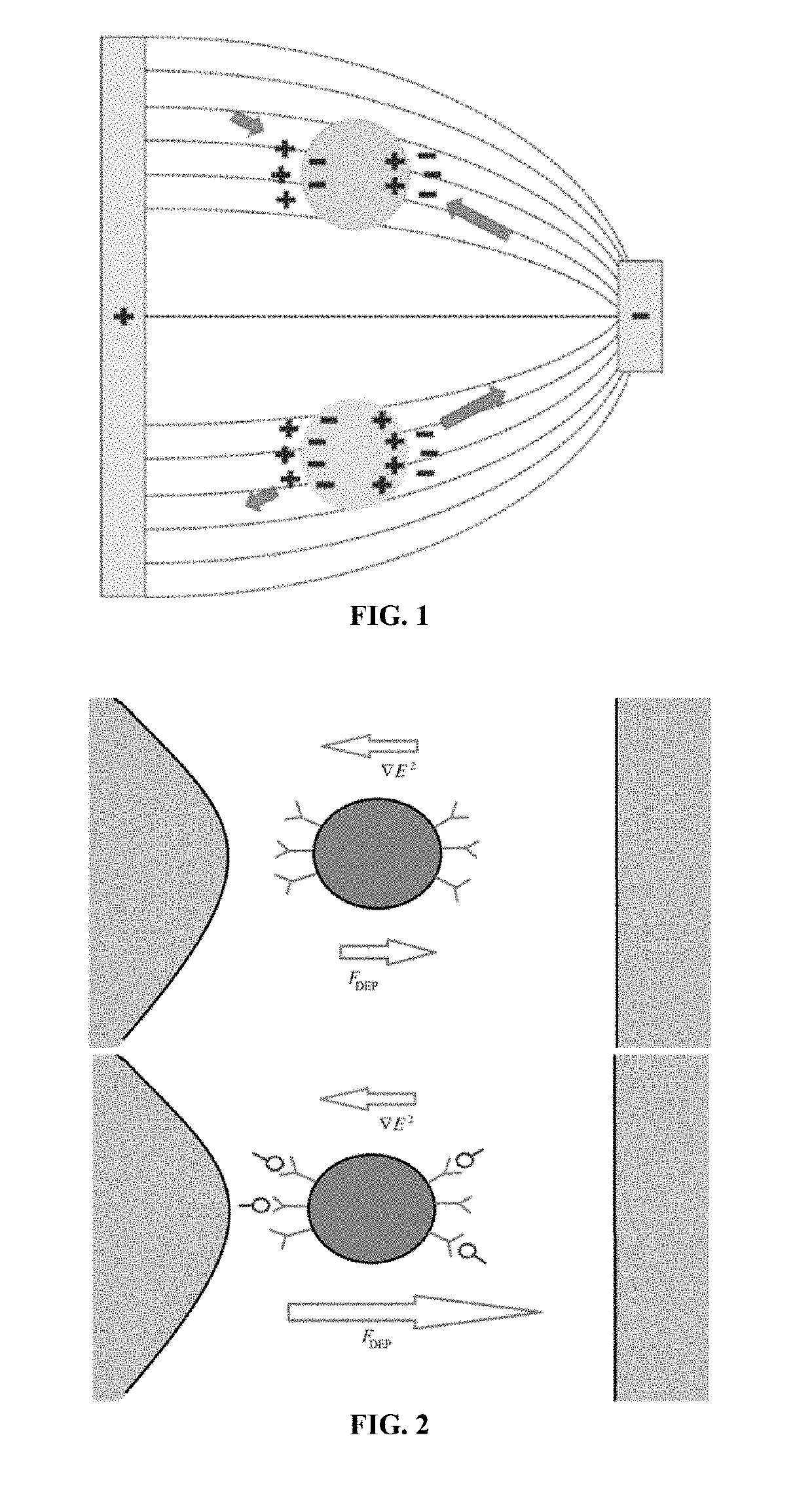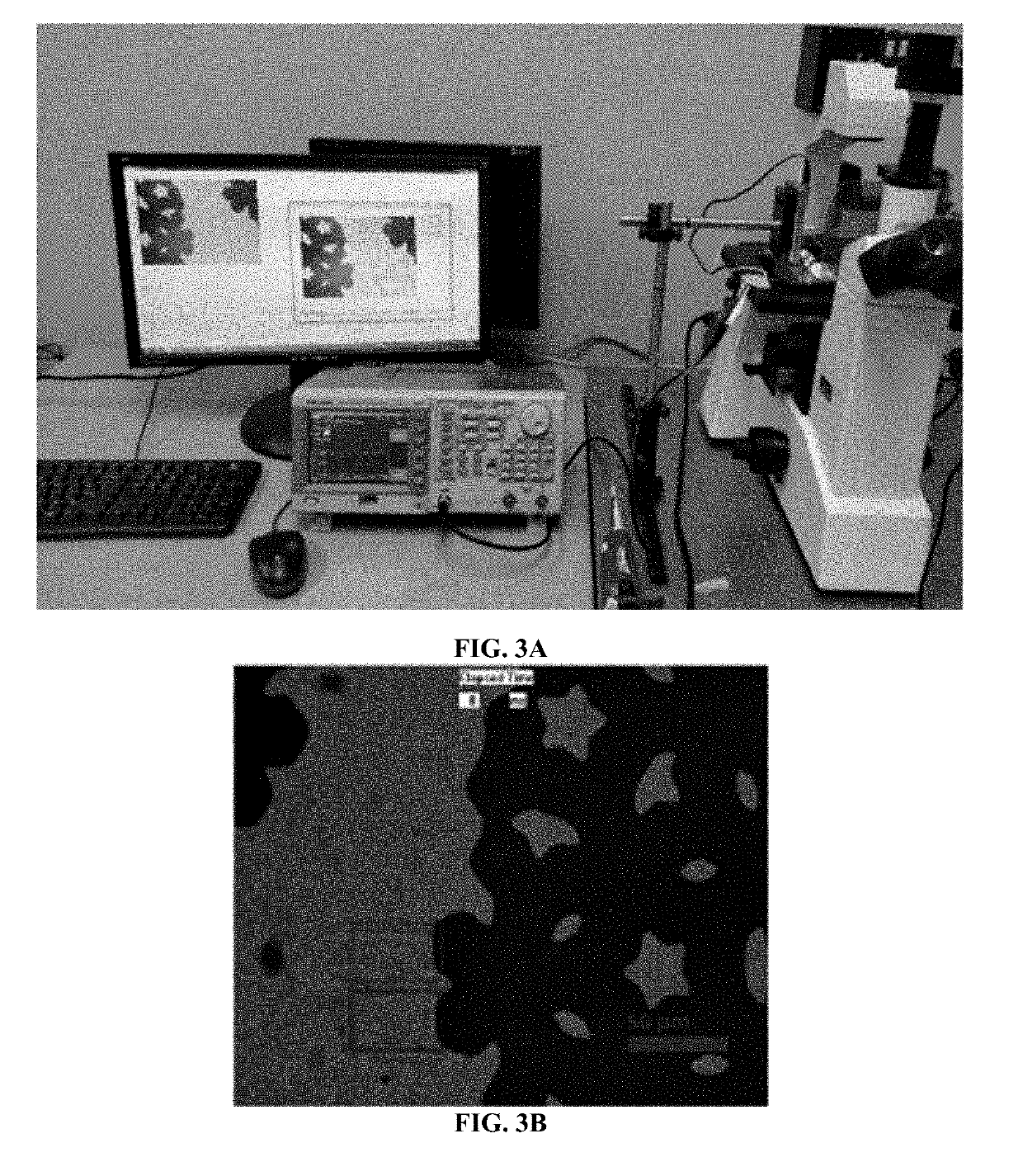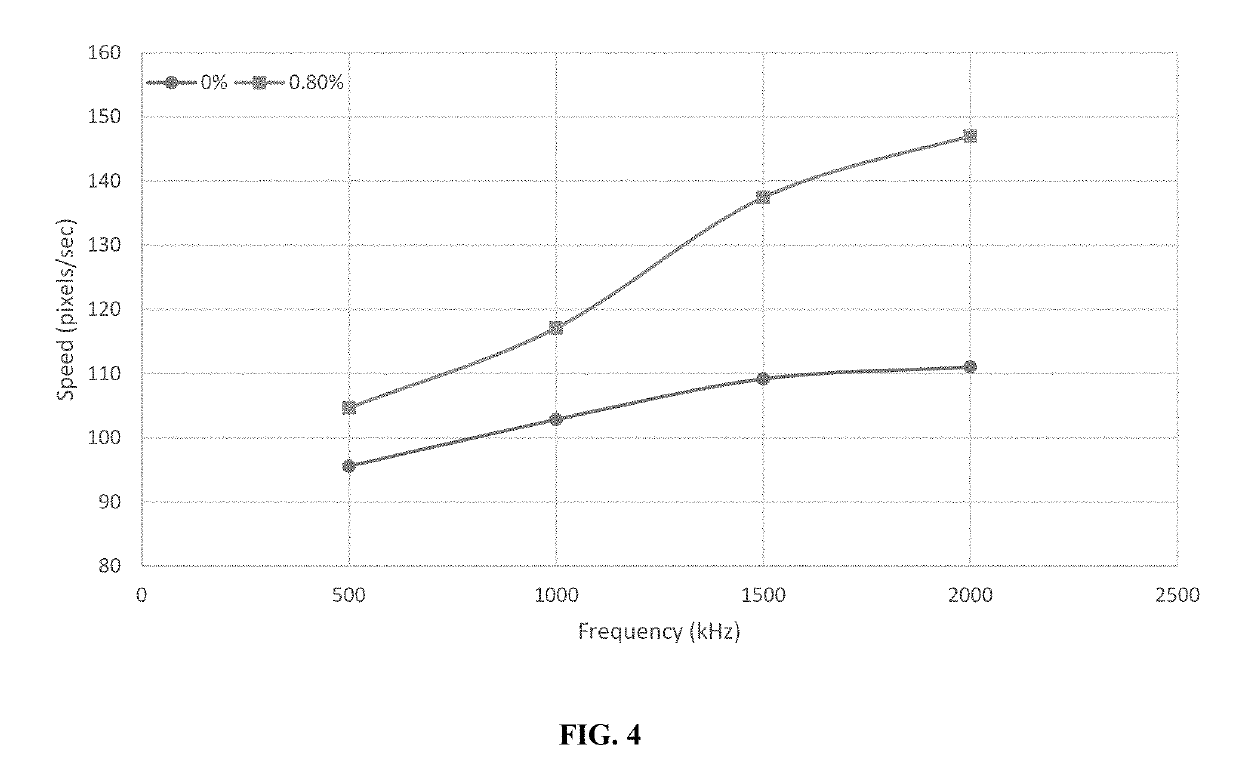Method for detecting analytes using dielectrophoresis related applications
a technology of dielectrophoresis and analytes, applied in the field of systems and methods for sensing analytes, can solve the problems of inconvenient detection of certain disease biomarkers, ineffective biopsy and conventional imaging methods, and high cost, and achieve the effect of reducing the risk of cancer, improving the detection efficiency, and improving the detection efficiency
- Summary
- Abstract
- Description
- Claims
- Application Information
AI Technical Summary
Benefits of technology
Problems solved by technology
Method used
Image
Examples
example 1
phoretic (DEP) Spectroscopy Application and System
[0108]DEP cross-over frequency has been used in detecting and quantifying biomolecules. A manual procedure is commonly used to estimate the cross-over frequency of biomolecules. Therefore, the accuracy of this detection method is significantly limited. To address this issue, the present inventors designed and tested an automated procedure to carry out DEP spectroscopy An exemplary embodiments of the method is described and tested in this example. The method efficiently measures the effect of the DEP force through a live video feed from the microscope camera and performs real-time image processing to efficiently measure the effect of DEP force on dielectric particles. This allows for enhanced accuracy in determining DEP crossover frequency and DEP spectroscopic curves for dielectric particles in a conductive solution or medium, which has application for detecting, quantifying, and characterizing biomolecules attached to the dielectric...
example 2
yte Quantification Through DEP Spectroscopy
[0122]The variation of DEP force on biotin-avidin conjugated dielectric particles at various frequencies was studied using the system described in Example 1. Biotin functionalized dielectric particles with 0.74 μm diameter (10,000 biotin molecules on each bead surface) were purchased from Spherotech Inc. These biotinylated beads were conjugated with fluorescently labelled avidin molecules (1 mg / mL) purchased from Vector Labs Inc. using the procedure recommended by the manufacturer. In order to achieve 0.8% avidin-biotin conjugation (i.e., 80 avidin molecules attached to 10,000 biotin molecules on the surface of dielectric particles), 24 nL of avidin solution and 10 μl biotin functionalized dielectric particles were incubated for 30 min at room temperature. The solution was centrifuged at 5000 rpm for 12 min to separate functionalized beads from the solution. After centrifugation, the supernatant was removed and 390 μl of 0.01× diluted phosp...
example 3
yte Quantification Through DEP Spectroscopy
[0128]The system of Example 1 was used for further studies. In this example, the application was used to convert captured frames into greyscale and to perform real-time image processing to obtain useful information. For this example, the start frequency was 500 kHz, the frequency step was 300 kHz, and the stop frequency was 2 MHz, which produces a negative DEP spectrum with six measurements. The peak-to-peak voltage value was 10 V. The time interval for positive DEP was 30 seconds and the time interval for negative DEP was 4 seconds per frequency measurement.
[0129]To measure the negative DEP spectrum, the experiment starts with a certain frequency fp that induces strong positive DEP effect for a specified time interval to concentrate the dielectric particles at the edges of the electrodes. When the time interval of the positive DEP elapses, the frequency of the function generator is automatically changed to the first frequency fn,1 that ind...
PUM
| Property | Measurement | Unit |
|---|---|---|
| diameter | aaaaa | aaaaa |
| diameter | aaaaa | aaaaa |
| diameter | aaaaa | aaaaa |
Abstract
Description
Claims
Application Information
 Login to View More
Login to View More - R&D
- Intellectual Property
- Life Sciences
- Materials
- Tech Scout
- Unparalleled Data Quality
- Higher Quality Content
- 60% Fewer Hallucinations
Browse by: Latest US Patents, China's latest patents, Technical Efficacy Thesaurus, Application Domain, Technology Topic, Popular Technical Reports.
© 2025 PatSnap. All rights reserved.Legal|Privacy policy|Modern Slavery Act Transparency Statement|Sitemap|About US| Contact US: help@patsnap.com



